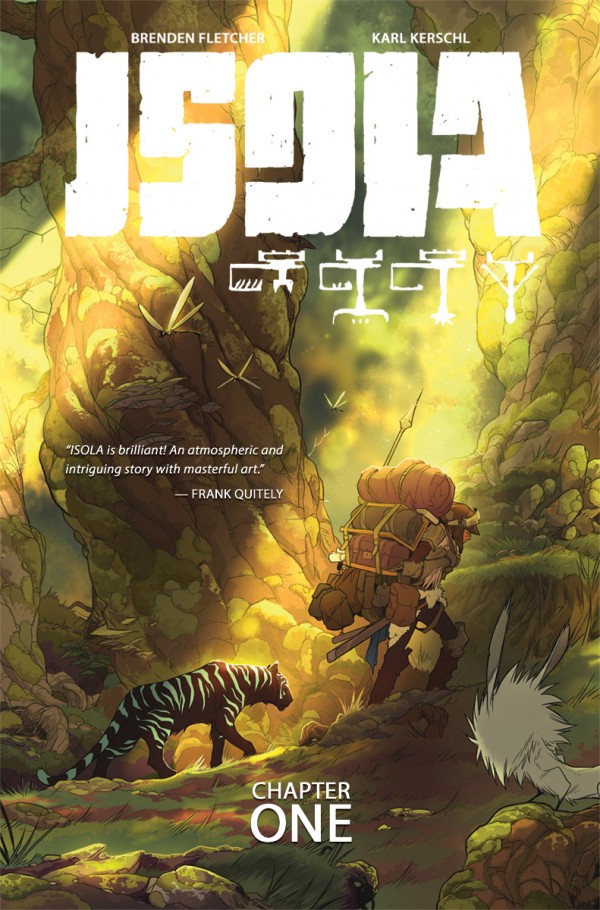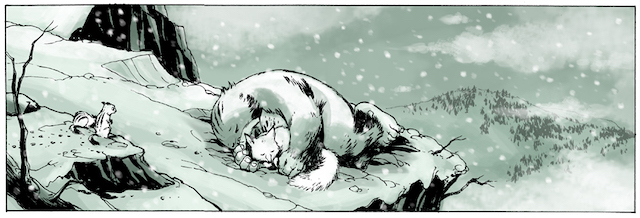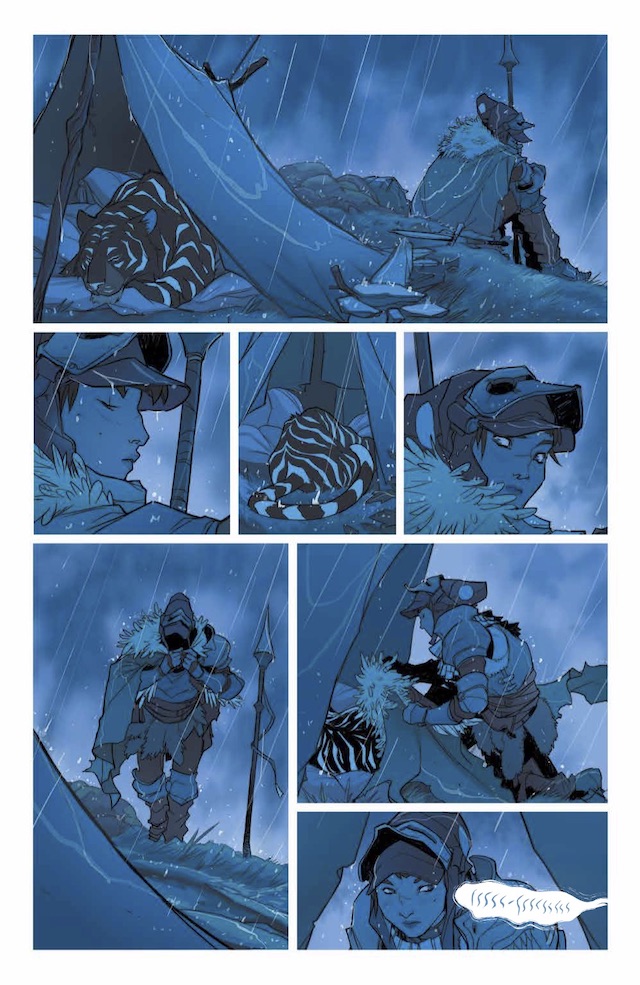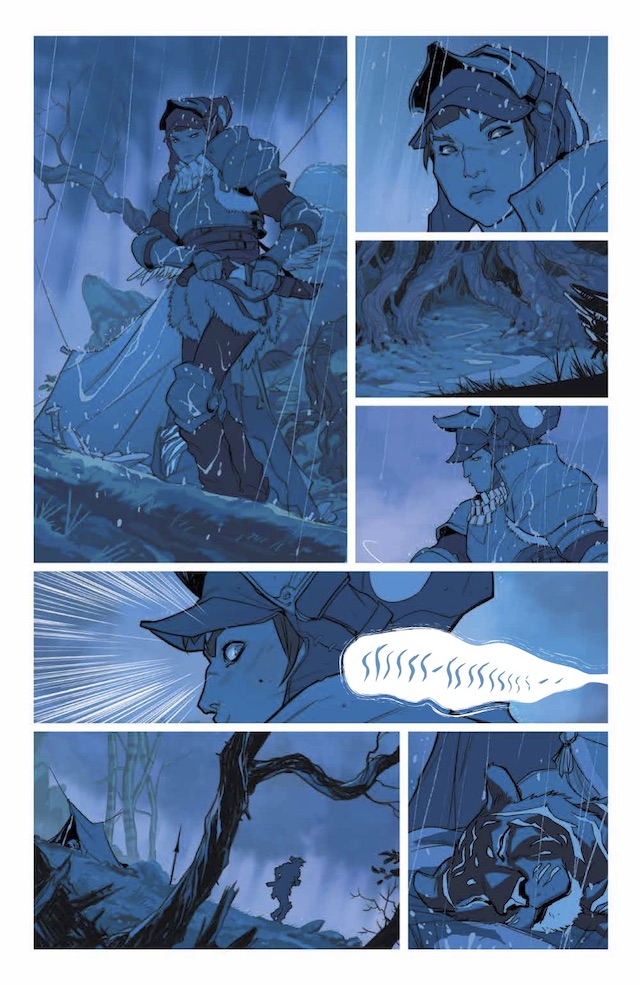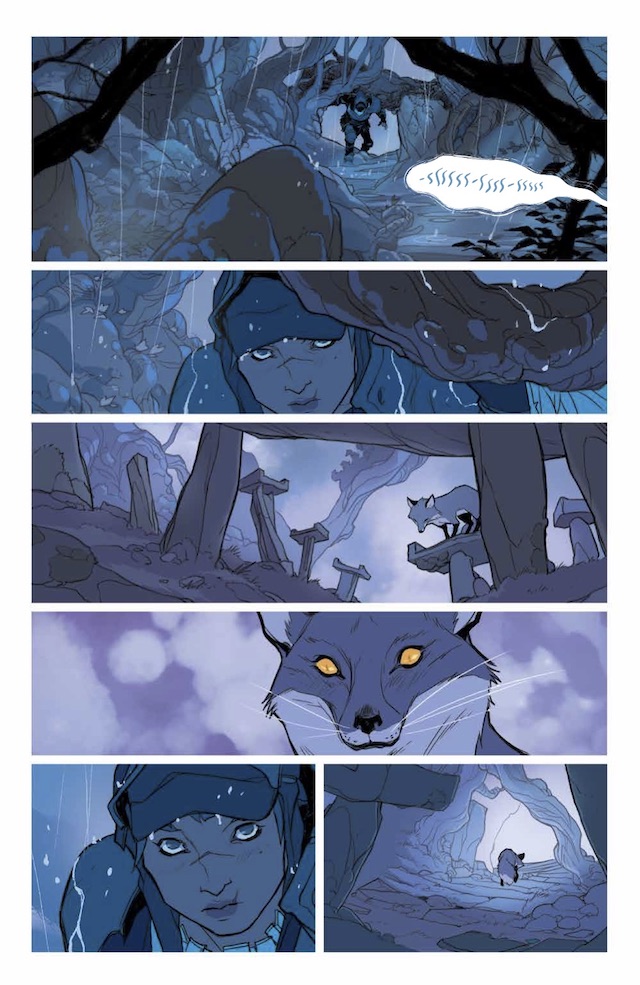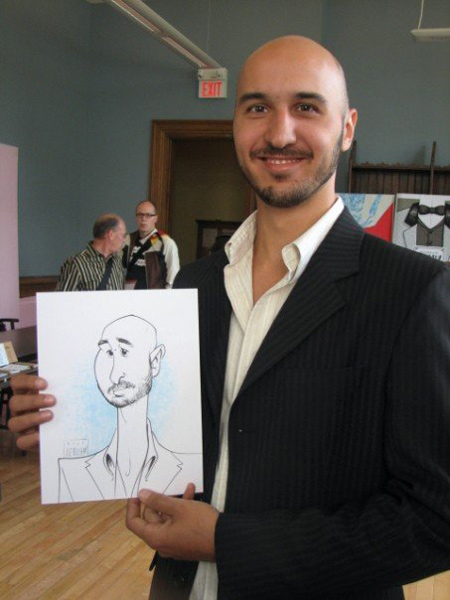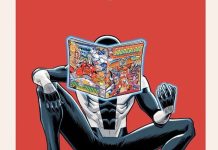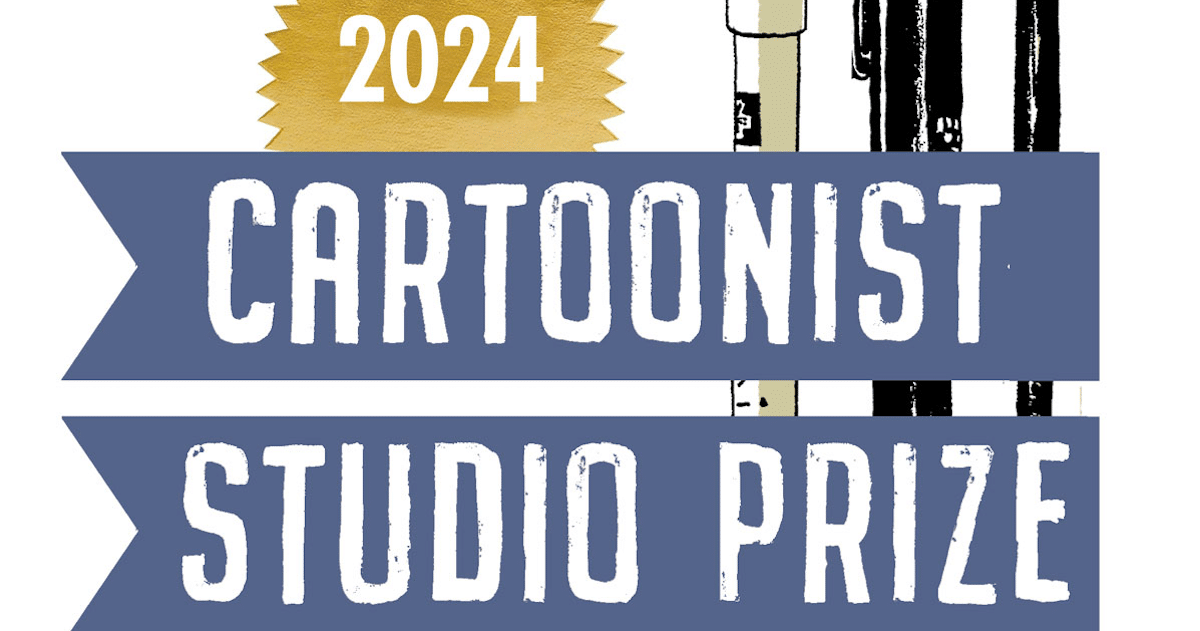As someone who loves Karl Kerschl’s comic strip The Abominable Charles Christopher, I was very excited that he’d get to tackle a long-form narrative with ISOLA. The gorgeously illustrated fable focuses on quiet moments and unafraid of telling the story through art more than text. I was pleased to chat with Kerschl for the second time and learn more about his process, the pacing of ISOLA, and his collaboration and with co-writer Brenden Fletcher.
All art from ISOLA used in this post illustrated by Karl Kerschl and colored by Msassyk
Given similarities like a focus on nature and a silent protagonist, did The Abominable Charles Christopher help prepare you to make ISOLA?
The Abominable Charles Christopher helped prepare me for a lot of things – writing and drawing my own stories, learning the business side of self-publishing, and maybe most of all, helping me to understand what it is I actually like about comics and stories; what makes them personal to me. I worked for so many years on other characters that I kind of forgot why I wanted to do it in the first place.
The similarities between the two stories aren’t really intentional; they’re just what comes out when I sit down and try to make something without editing myself too much. However, the core story of ISOLA was something that came up in an effort to bridge the gap between the audiences of my two main areas of work – the superhero readers and the webcomic readers. ISOLA is a mix of the two.
You’ve said you do all the work (story, script, art) for a page of The Abominable Charles Christopher in the span of a day. Is there more pressure taking on a project much bigger in length and scope?
It’s different in that The Abominable Charles Christopher was never intended to be along form story. I approached it as a weekly gag comic so it was easy to work on without too much planning. Later on, it became more of a long-form narrative and I think that’s largely what slowed my progress on it. ISOLA was always a high-concept journey story. Brenden and I started with a concrete beginning and ending, which isn’t likely to change, so the pressure mostly comes from making sure we’re making the middle of the story – the actual journey to ISOLA – as interesting as possible. With fantasy worlds like this, it’s easy to let the details sprawl into something unmanageable, so our goal is always to keep the heart of the story as personal and as simple as possible. It’s hard.
How does Brenden’s involvement in ISOLA enrich the comic? What makes your collaboration with him so special?
We’ve known each other since grade six, which… I mean, it’s great to have close friends that you’ve known for your whole life, but what makes our relationship special is that we’ve shared similar tastes in art, music, everything for all those years and we love the same kinds of stories and storytelling. We’re always on the same page when it comes to the tone of a story or the nuance of a character and I don’t think I really know anyone else who shares my very specific tastes in the same way. I think it’s extremely rare.
So when we’re working on something, we barely need to speak about in specifics – it’s just a lot of talking about character motivation, world-building, etc and point-form notes indicating the broad story beats and that’s really enough for us to go on as a ‘script’. I wouldn’t want to ever publish one of our scripts because it would be illegible to anyone else. Except maybe our Assassin’s Creed: Brahman script, which is the only one we actually wrote in proper script format, more as an experiment than anything else.
Anyway, our writing process is just a conversation and some notes, but what makes it actually work is the two of us bringing ideas to the table that the other may not have thought of and those ideas being immediately understood and integrated in a way that feels like it came from one mind.
Also, we never really fight or argue about anything because when one of us has a strong reaction to something the other guy just assumes he’s probably right.
How has it evolved since you two dreamt it up all those years ago?
ISOLA was actually only thought up a few years ago (just before we started work on Gotham Academy) but it owes a lot to a story we worked on for several years in the 90’s and 00’s called ‘MIKI‘. That was our first real project and we taught ourselves a lot about stories and craft while putting it together. It was a real genre hodge-podge but what it really did was allow us to figure out what we actually like and how to get it onto a page in a way that makes us happy. Sparse, realistic dialogue, quiet, contemplative moments and fantasy landscapes with lots of animals. Most of all, it was a story about two women -best friends – and their relationship as they mature.
A lot of what we did in MIKI went into the creation of Olive and Maps in Gotham Academy and now Rook and Olwyn in ISOLA. Maybe it will be out of our system after this.
Would you ever release those pages of the first iteration you drew in the 90’s?
I would, actually! […] Even though my work has been refined over the years I’m still really proud of a lot of that older stuff. There must be over forty pages of story that I drew for it, along with a whole bunch of character designs, animals, airships, etc. There was also a huge chunk of the finished script that I think was pretty good. One day maybe we’ll put it all up online.
What are some influences on ISOLA readers might not expect?
The obvious influences are Miyazaki’s Ghibli films, particularly Nausicaa and Princess Mononoke. The less obvious ones are Dark Souls (a video game I poured a year into, which taught me a lot about telling a story through the environment and incidental characters), Macross (the original anime series, translated as ‘Robotech’ in the west, which we’re huge fans of). Also a lot of manga book design. Come to think of it, most of our influences are Japanese.
You’ve already created a prologue for the story that provides further detail into the world and characters. Do you and Brenden have plans for more worldbuilding outside the main narrative?
I think referring to the prologue as ‘worldbuilding’ is a great way to put it. I don’t really see it as part of the main narrative and I would never suggest that anyone read it as the ‘start’ of the story, but it’s a fun way to dig a bit deeper into Rook and Olwyn’s past if you’re looking for that sort of thing.
I don’t want to do a glossary or anything but it would be nice to eventually publish some animal designs or more detailed maps. We’re working from a map I made of the world that sort of expands as we write the story – you can see parts of it on the issue covers and inside covers, but it’s far from complete.
Will each volume of ISOLA follow the same five-issue arc format?
That’s the plan! Five issue per chapter and then collected into trade paperback volumes. We’re going bi-monthly as of the second arc to give ourselves more time to complete each issue.
Have you plotted ISOLA all the way to the end? You and Brendan clearly have a direction in mind, but it also feels like the kind of story that could change in the telling.
We’ve had an ending in mind since Brenden first pitched me the idea, but I don’t think we could call what we do ‘plotting’ by any stretch of the imagination. We know what the broad strokes are in getting to the end, but we still want to treat this as a serialized story and in our case, that means also writing for the issues and surprising ourselves along the way. I don’t like to plan anything in my life more than a day ahead if I can help it.
The first paperback volume of ISOLA is out TODAY at your local comic book shop and ComiXology and will be available at bookstores next Tuesday. Follow Karl on Twitter @karlkerschl and read the wonderful Charles Christopher here.



